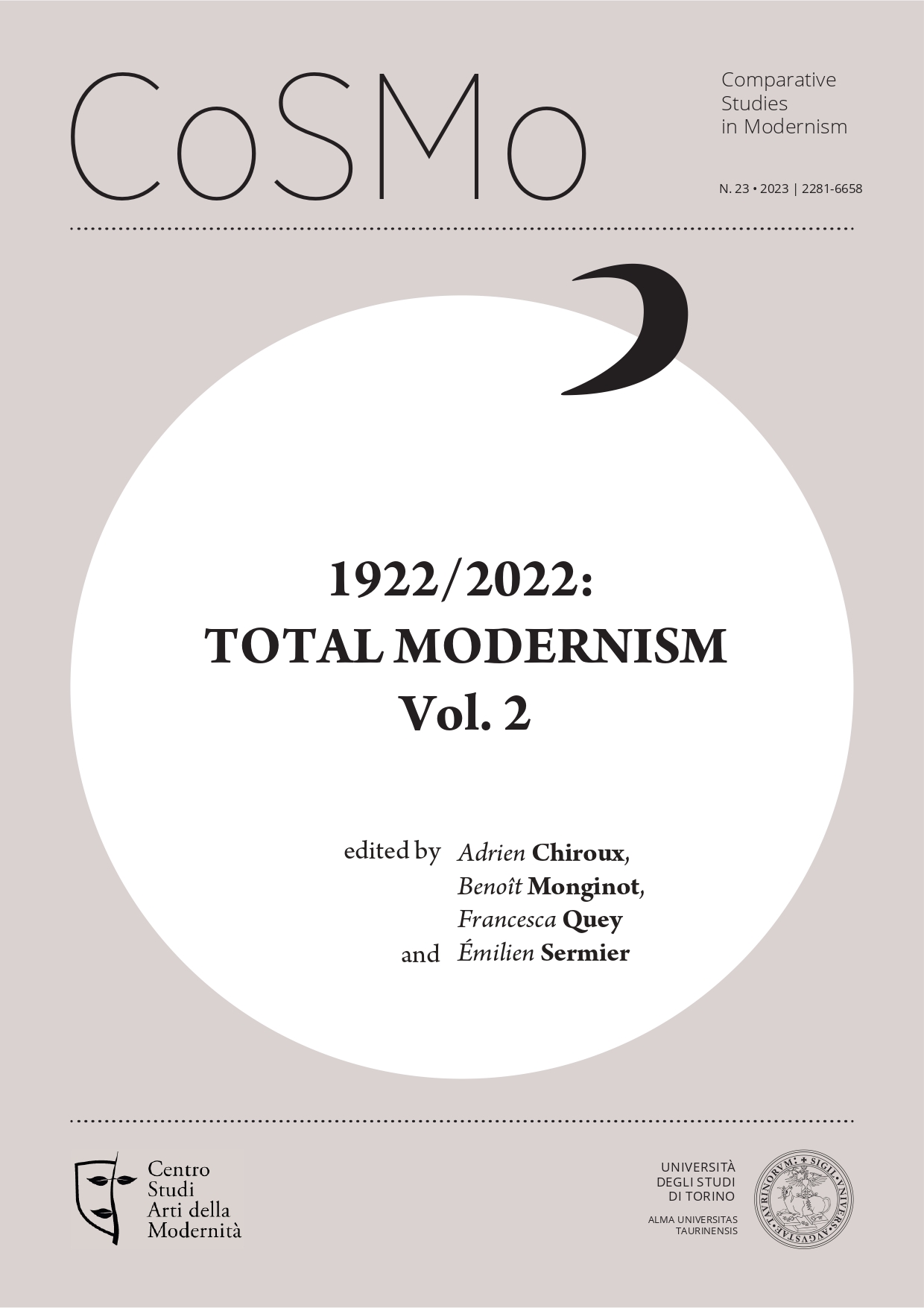Hesse, Woolf, and the Art of (Re)Construction
A Comparative Study of “Der Steppenwolf” (1927) and “The Waves” (1931)
DOI:
https://doi.org/10.13135/2281-6658/9174Parole chiave:
Modernism, Comparatism, Hermann Hesse, Virginia Woolf, (20th century) Novel, Polyphony, Fragmentation, Construction, Totality, Subject, Identity, Psychoanalysis, Self-writingAbstract
Written at the end of the 1920s, Hermann Hesse’s Der Steppenwolf (1927) and Virginia Woolf’s The Waves (1931) are marked by the developments of their time, psychoanalysis in particular. However, this article will show that far from being a literary transposition of psychoanalytical theories – with which Hesse and Woolf partially disagreed – these two novels propose a different conception of the subject. This article will demonstrate that the novelistic divisions as well as the multiplication of voices generate the presence of different points of view that enter into dialogue with each other and interweave until they form the novels themselves. I will eventually argue that these novels, conceived as the result of a dynamic between deconstruction and reconstruction of the self, constitute a modernization of the Bildungsroman that I would like to call Gebildete Romane (“constructed novels”).
Downloads
##submission.downloads##
Pubblicato
Fascicolo
Sezione
Licenza
Gli autori mantengono i diritti sulla loro opera e cedono alla rivista il diritto di prima pubblicazione dell'opera, contemporaneamente licenziata sotto una Licenza Creative Commons - Attribuzione che permette ad altri di condividere l'opera indicando la paternità intellettuale e la prima pubblicazione su questa rivista.







